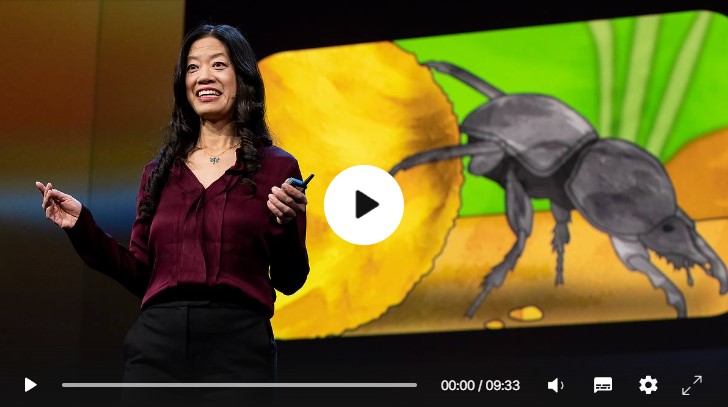
The world of Artificial Intelligence (AI) is changing constantly as scientists make incredible progress in mimicking the human brain. As we progress further into the future, new methods must be created to revolutionize the industry of AI. In her Ted Talk, Frances S. Chance explores the potentially groundbreaking source of AI – insect brains. She draws attention to the unique powers of insects and explores how they could be utilized to aid humans in creating new and advanced forms of AI. In this essay, I will review and reflect on the ideas presented in Frances S. Chance’s Ted Talk and analyze how insect brains could profoundly affect the AI industry.
In a recent Ted Talk, scientists explored the differences between human and insect brains. Insects have much smaller brains with less complexity and larger ratios of neurons to brain mass compared to humans. Research has shown that for insects, the most important part of the brain for decision-making is the mushroom body, which is located in the central brain area. In comparison, the human brain is much more complex. Humans have developed structures and abilities that allow for higher level cognitive abilities, such as abstract thought and language. This difference has played an important role in our species’ evolutionary success.
A Ted Talk entitled “The Different Types of Brain Cells” offers an interesting exploration of the various cells that make up the human brain. The presenter examines the differences between neurons, which are the primary brain cells, and the various other types of cells, including glial cells and stem cells. He explains how neurons work together to form networks and share information, while glial cells hold neurons in place and help them survive. He then turns to stem cells, which are stem-like cells that have the potential to become different types of brain cells, such as neurons and their supporting cells. The presentation offers a comprehensive overview of the types of brain cells that exist and their roles in the functioning of the brain.
humans and insects, allowing both species to have the ability to survive. In a recent talk, a TED speaker discussed the different types of cells and how they impact overall health, as well as their role in development and evolution. He explained how a complex network of cellular interactions allows various species to gain greater complexity and adapt to changing environmental conditions. These insights offer new ways to develop strategies for better health and environmental protection.
Insects might be considered some of the simpler forms of life, but their brains are incredibly complex and powerful. In fact, the advanced processing power of insect brains is one of the primary motivations for the development of artificial intelligence (AI). Insects’ ability to quickly sense and respond to their environment can give AI programs a leg up in navigating the complexity of real-world settings. Furthermore, when it comes to using resources efficiently, insects have unparalleled capabilities. Thus, the power of insect brains should not be underestimated.
Frances S. Henson’s Ted Talk highlights how researchers are leveraging insect brains as a model for artificial intelligence. She asserts that understanding the way insects interact with their environment can improve the accuracy of AI applications. Insects reveal powerful and energy efficient ways of setting perception and navigating the world. With this in mind, this Ted Talk demonstrates how these insect brains can inform and improve AI that could in turn improve our understanding and interaction with the world.


